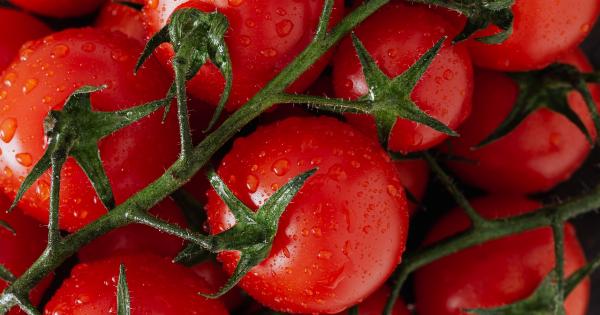Fruits and vegetables are an essential part of a healthy diet. They provide us with vital nutrients, vitamins, and antioxidants that boost our immune system and help us maintain good health.
However, keeping fruits and vegetables fresh can sometimes be a challenge. In this comprehensive guide, we will explore various methods and tips to ensure that your produce stays fresh for longer, reducing food waste and maximizing their nutritional value.
1. Proper Storage Temperature
The temperature at which you store your fruits and vegetables plays a crucial role in their freshness. Most fruits and vegetables thrive in cool environments, and storing them at the optimal temperature can extend their shelf life.
2. Utilize Refrigeration
Refrigeration is an effective way to keep your fruits and vegetables fresh. However, it is important to note that not all produce should be stored in the refrigerator.
Some fruits and vegetables are sensitive to cold temperatures and can deteriorate quickly when refrigerated. It is essential to understand which produce can benefit from refrigeration and which should be stored at room temperature.
3. Wrapping and Packaging
Proper wrapping and packaging can prevent fruits and vegetables from getting damaged or spoiled. Some fruits, such as apples and pears, release ethylene gas, which can accelerate the ripening process of other produce.
To prevent this, store ethylene-producing fruits separately or in breathable bags.
4. Moisture Control
Moisture control is vital to maintaining the freshness of fruits and vegetables. Excess moisture can lead to the growth of mold and bacteria, causing spoilage. On the other hand, inadequate moisture can lead to dehydration and shriveling.
Finding the right balance is crucial.
5. Washing and Cleaning
Properly washing and cleaning your fruits and vegetables before storage is crucial. It helps remove dirt, pesticides, and bacteria that may be present on their surface.
However, some produce can be sensitive to excessive moisture, so it is important to follow recommended washing methods for different types of fruits and vegetables.
6. Utilizing Freshness Extenders
There are various freshness extenders available in the market that can help prolong the freshness of fruits and vegetables. These include ethylene absorbers, produce storage bags, and storage containers specifically designed to regulate humidity levels.
These extenders can help you make the most of your produce and reduce food waste.
7. Freezing as a Preservation Method
Freezing is an excellent preservation method that can help keep fruits and vegetables fresh for an extended period. However, not all produce is suitable for freezing, as certain fruits and vegetables can lose their texture and flavor when thawed.
Understanding which produce can be frozen and how to freeze them properly is essential.
8. Canning and Pickling
Canning and pickling are traditional methods used to preserve fruits and vegetables. These methods involve preserving produce in jars with the help of additives like vinegar or sugar.
Proper canning and pickling techniques can help extend the shelf life of fruits and vegetables while maintaining their taste and nutritional value.
9. Effective Meal Planning
Meal planning can significantly contribute to reducing produce waste.
By planning your meals and grocery shopping accordingly, you can ensure that you only buy the required amount of fruits and vegetables, reducing the chances of them going bad before you can consume them.
10. Rotating Your Stock
Rotating your stock is a simple yet effective way to ensure that older fruits and vegetables are used before newer ones.
By placing newly purchased produce at the back and bringing older ones to the front, you can avoid forgotten and wasted fruits and vegetables.
Conclusion
By implementing the tips and methods mentioned in this comprehensive guide, you can significantly improve the freshness and longevity of your fruits and vegetables.
Proper storage, temperature control, moisture regulation, and utilizing preservation methods can go a long way in reducing food waste, saving money, and ensuring that you have access to nutritious produce for longer periods.





























